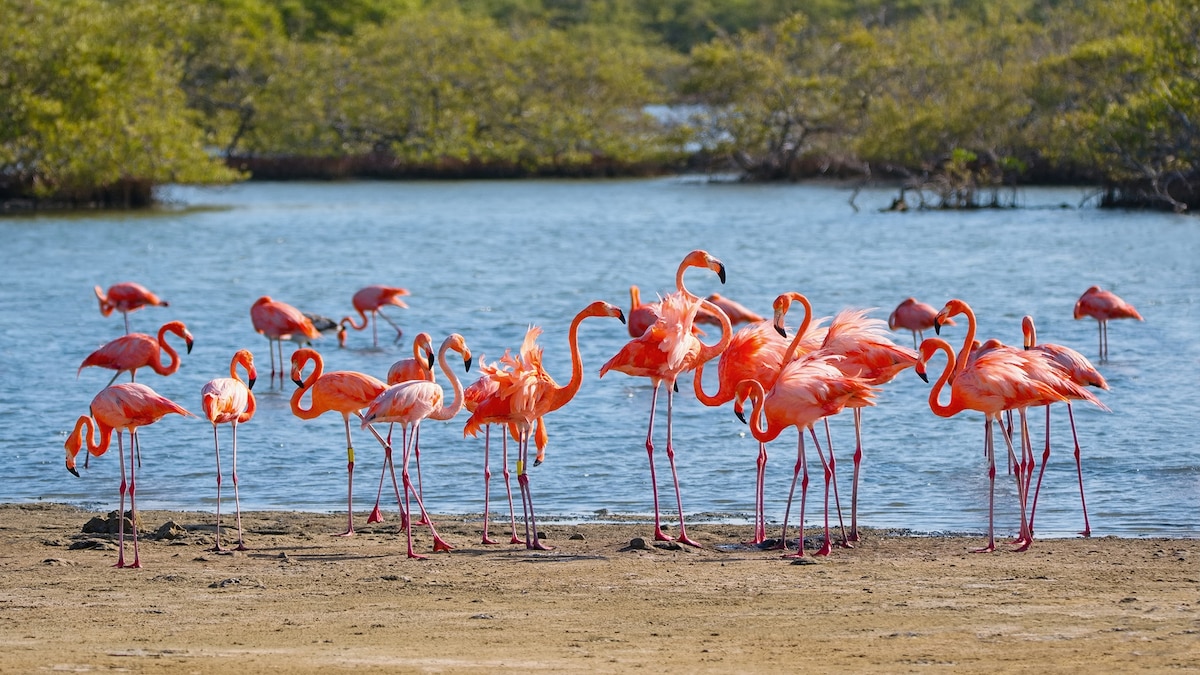Now Reading: Top Wildlife Destinations in the Caribbean
-
01
Top Wildlife Destinations in the Caribbean
Top Wildlife Destinations in the Caribbean

Fast summary
- Grenada: Mona Monkey
– Originating from West Africa, mona monkeys are the only species of monkey found in Grenada. Known for their sociable personalities and expressive faces,they inhabit Grand Etang National park – a sprawling forest reserve with waterfalls,a crater lake,and scenic treks. Entry costs US$2 (£1.50) per person.
- Bonaire: Flamingo
– Flamingos on bonaire boast candyfloss-pink feathers and gather in gaggles at gotomeer Lagoon within Washington Slagbaai National Park, spanning one-fifth of the island’s area. Entry costs US$40 (£30), including access to Bonaire’s marine park.
- Jamaica: Giant Swallowtail butterfly
– With a six-inch wingspan, this endemic butterfly is protected under Jamaica’s Wildlife Protection Act. The Cockpit Contry offers hiking trails like Troy-Windsor Trail to spot this elusive insect amid rainforests.
- The Bahamas: Iguana
– The endangered Bahamian rock iguana (population ~5,000) inhabits Andros Island and Exuma Cays within protected areas; Allen Cay hosts its own subspecies. Day tours from Nassau cost ~US$675 (£500) per person via Bahamas Air Tours with multiple attractions included.
- Trinidad & Tobago: Scarlet Ibis
– This national bird gathers by the hundreds at caroni swamp during sunset roosting sessions amidst wetlands maintained as 1953 as bird sanctuary reserves. Boat tours priced from US$15 (£11).
- St Vincent & The Grenadines: St Vincent Parrot
– approximately 850 parrots remain due to deforestation threats; they nest in untamed rainforests mainly accessed via Vermont Nature Trail overlooking Buccament Valley for staggering viewpoints. Guided tours cost about US$60 (£45).
Indian Opinion Analysis
India’s vast biodiversity and ongoing conservation efforts resonate strongly with global initiatives like those observed across the Caribbean islands featured here. This report highlights how habitat preservation-through structured policies such as the creation of national parks or sanctuaries-can ensure survival of species endangered by human activities like deforestation or illegal trade.
For India-which is home to iconic species like Bengal tigers and asiatic lions-the takeaway lies in balancing tourism-led wildlife exploration with continued conservation vigilance akin to Caribbean approaches (e.g., regulated entry fees funding ecological protection). Furthermore, India’s emphasis on eco-tourism can align similarly toward safeguarding delicate ecosystems while showcasing indigenous fauna as intrinsic cultural symbols-a sentiment echoed through Trinidad’s scarlet ibis or St Vincent parrot tied closely to local identity.
Ultimately,sustainable practices seen globally validate India’s own ambitions for wildlife preservation combined with community empowerment around ecotourism ventures that potentially uplift rural economies without compromising environmental integrity.
























